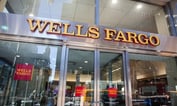 Bank of America Corp. hit a new milestone in its years-long effort to get costs under control.
Bank of America Corp. hit a new milestone in its years-long effort to get costs under control.
First-quarter expenses totaled about 60 percent of revenue, the best ratio in more than five years. That helped push profit above analysts’ estimates, and corporate tax cuts spurred earnings to a record. Net interest income got a bigger boost than expected from higher interest rates, but fixed-income trading disappointed.
Improvements in the cost ratio will “continue to be the gift that keeps on giving for the stock as BAC continues its responsible growth agenda,” Glenn Schorr, a bank analyst at Evercore ISI, wrote in a note, referring to the company by its stock ticker. “The BAC steady improvement story seems very much intact.”
Chief Executive Officer Brian Moynihan, who’s had the top job for eight years, spent much of that time working to free the bank from legal entanglements and other costs that weighed on the lender after the financial crisis. The tax cuts could help the bank turn more to growth initiatives, including plans to open new branches and expand into states such as Ohio.
The company, the second-largest U.S. bank, reported net income of $6.92 billion, a 30 percent increase over a year earlier, surpassing analysts’ expectations. Total revenue climbed 3.7 percent to $23.3 billion, also higher than estimates, according to a statement from the bank on Monday.
“This quarter is not an anomaly,” Chief Financial Officer Paul Donofrio said on a conference call with reporters. “Instead it’s the latest in a string of quarters where we’ve shown consistent improvement in financial performance.”
Shares of the company, which have advanced 1 percent this year, were virtually unchanged at $29.83 at 10:25 a.m. in New York.









 April 16, 2018 at 02:15 PM
April 16, 2018 at 02:15 PM










